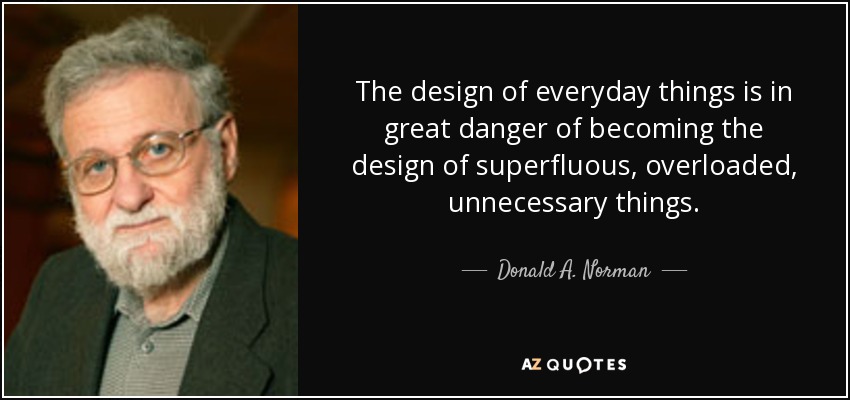Ps: As i am writing this after everything we have gone through this semester, i would be taking a different approach with this response to Donald Norman's chapter on the Design of Everyday things.

Designing well is not easy. Why? It is not just about the aesthetics of the object. It needs to sell well. It needs to function well. It needs the minimum amount of maintenance once is it bought by the public. With so many people wanting something to be achieved by the product – the manufacturer, the seller, the repair servicemen and ultimately the user. Even though the Norman ultimately encourages User-centered design as the framework for many of the products or services we use today, it must essentially benefit everyone else who had a part to play in this process as they are all correlated to one another. Norman states that these needs of those concerned are very different and often collide, all the more do the people involved, from the designer to the repairman himself, need to put down their ‘disciplinary viewpoint’ to look at the user’s point of view. This is to essentially ensure that people would still want to buy the product after it comes out.
This simple consideration of all the different disciplines can be seen in our most recent proposal for ilight, we had to think for the IEM team who are virtually our fellow engineers and manufacturers who knew all the tech and facts that takes to run our installation. We had to come up with a feasible form and design of audience interaction to cater to their needs (for the course) and abilities (only one EEE course). Then there is the virtual ‘repairmen’. We had to proofread our design so that the repairmen could easily access the electronics without having to dismantle the whole setup. Last but not least, we had to add signifiers and light displays to guide and attract the users of the installation. All these different disciplines must not just be perfect in their own ways but to norman, they must be perfectly in sync so that the design ultimately ‘sells’.
Question 1:
How many different disciplines must be taken into consideration for the whole design? does it differ in different contexts or do all the contributors of the project have to cooperate to create the best project?
Question 2:
Despite having the seven stages of action, does the item have to serve a specific purpose to fulfill this or can it include multi-purpose products? With this does it still have to be seen in the perspective of the world?

